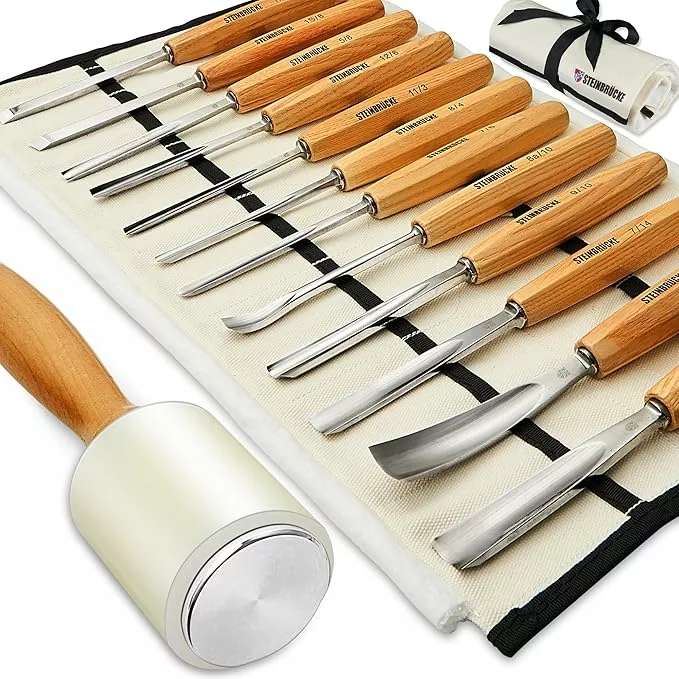Top Tools Every Mold Maker Should Have in Their Toolkit
Having the top tools at your disposal isn’t just about making your work easier; it’s about ensuring that every project you tackle meets the highest standards of quality and precision. Whether you’re a seasoned professional or just starting in the mold-making world, equipping yourself with a comprehensive toolkit can significantly enhance your efficiency and capability.
Table of Contents
Mold making encompasses a vast array of projects—from crafting delicate jewelry molds to constructing robust, large-scale industrial designs. Each project demands a unique set of tools tailored to the task at hand. The finesse required for small-scale models is vastly different from the sturdy support needed for large or composite molds.
Efficient tool selection enables a mold maker to approach projects with enhanced creativity and reduced turnaround times. Top tools aren’t merely instruments; they are extensions of your hands, helping translate ideas into tangible, perfect creations. Investing in the right tools doesn’t just impact the quality of your output—it also helps you manage time effectively, letting you take on more projects or tackle complex masterpieces.
As an Amazon Associate, I earn from qualifying purchases.
This post contains affiliate links. If you make a purchase through these links, I may earn a commission at no extra cost to you.
A diverse toolkit can also open doors to expanding your skill set. Access to specialized tools allows you to experiment and innovate, pushing the boundaries of conventional mold making. Ultimately, a well-equipped toolkit is fundamental to professional mold making. It’s not just about having tools on hand; it’s about having the ideal set to enhance both your artistry and productivity.

Must-Have Hand Tools
The finesse and accuracy of your final product trace back to the foundational of top tools in your kit. Hand tools are the essential workhorses in mold making, meticulously refining every detail to bring your vision to life.
1. Sculpting Tools
Sculpting with top tools that shape and detail your models before transitioning them into molds. From loop tools to wire styluses and wooden shapers, each type serves a unique purpose. They help carve textures, smooth surfaces, and refine intricate features, ensuring your model is as close to perfect as possible.
2. Cutting Tools
Precision knives and rotary cutters are indispensable for trimming molds and materials. They allow clean, sharp cuts through silicone, rubber, or other mediums without leaving rough edges. Choosing the right blade for the job ensures smooth results and maintains the integrity of your mold.
3. Spatulas and Scrapers
These top tools evenly spread and apply casting materials such as silicone or plaster. Consistency in application is crucial to avoid air pockets and achieve a uniform surface, directly affecting the mold’s quality and durability.
By mastering these hand tools, you elevate your craftsmanship and expand your ability to tackle diverse projects with confidence.

Top Tools for Mixing and Measuring Essentials
Precision in mixing and measuring can mean the difference between a flawless mold and a disappointing failure. These tools are critical to ensuring your materials perform as expected.
1. Mixing Cups
Mixing cups with clear measurements help maintain consistency across projects. Precise ratios are crucial for multi-component materials like resins, silicones, and plasters.
2. Stirring Sticks
Wooden or silicone stirring sticks enable the thorough blending of materials without introducing air bubbles. Smooth, even mixing is essential for creating durable, bubble-free molds.
3. Digital Scales
Digital scales ensure accurate measurements, particularly for materials requiring specific ratios. This level of precision prevents weak spots or inconsistencies in your molds.
Establishing precise mixing and measuring routines lays a foundation for professional-grade results, reducing waste and maximizing efficiency.
Molding and Casting Supplies
Selecting the right supplies ensures your molds and castings achieve the durability and detail you need.
1. Silicone and Polyurethane RTV Molds
These materials are staples for their flexibility and fine detail retention. Silicone molds are often reusable and ideal for jewelry, while polyurethane molds are perfect for casting more durable, functional pieces.
2. Mold Release Agents
These agents prevent sticking and make demolding smoother, protecting your molds and ensuring cast integrity. Choosing a release agent compatible with your materials is essential.
3. Vacuum Chambers and Degassing Equipment
Entrapped air can compromise the strength and appearance of your cast pieces. Vacuum chambers remove bubbles, ensuring professional, flawless results. Many products these days claim to be bubble-free, this may be the case, especially with new products.
Focusing on quality supplies ensures consistent excellence in your projects, reflecting care and precision in every casting.
Safety Gear
Safety gear isn’t just about compliance; it’s vital for protecting yourself while working with potentially hazardous materials.
- Nitrile Gloves: Protect your skin from chemicals and resin stickiness.
- Safety Goggles: Shield your eyes from splashes during mixing and pouring.
- Respirators or Masks: Essential when working with materials that emit fumes or dust.
- Aprons or Protective Clothing: Safeguard your skin and clothing from spills and stains.
Investing in proper safety gear allows you to work comfortably and confidently while minimizing risks.
Finishing and Polishing Top Tools
Achieving a professional finish requires dedicated tools for refining and perfecting your creations.
1. Sandpaper and Files
These tools smooth rough edges and imperfections after demolding. Gradually transition from coarse to fine grit to achieve a flawless surface.
2. Polishing Wheels and Buffing Compounds
Polishing tools add shine and enhance the visual appeal of finished pieces, giving them a professional edge.
3. Rotary Tools
Versatile for detailed cleanup and engraving, rotary tools allow you to refine small imperfections and add intricate designs.
These top tools transform raw castings into polished, professional-quality pieces.
Organization and Storage Solutions for your Top Tools
An organized workspace boosts efficiency and keeps your creativity flowing.
- Toolboxes and Storage Bins: Categorize tools for easy access.
- Labeling Systems: Ensure materials and tools are easy to locate.
- Workbenches with Shelves: Provide a dedicated, clutter-free workspace.
Maintaining an organized environment streamlines your workflow, helping you focus on your craft.
Conclusion: Building Your Ultimate Toolkit
Equipping yourself with the top tools is an investment in your craft, your creativity, and your success. A well-rounded toolkit not only improves the quality of your work but also expands the scope of what you can create.
Start with the essentials—sculpting tools, cutting implements, and safety gear—and gradually incorporate specialized equipment like vacuum chambers or rotary tools as your projects evolve. Each tool brings you closer to mastering the art of mold making, turning your ideas into tangible, precise creations.
With the right toolkit, the possibilities are endless. What will you create next?
Contact Us.
We hope you find the information on top tools useful, but if you have any questions or need help, send us a message. You do have to sign in and confirm these days to comply with government rules. Sorry for the inconvenience.
Author Rob
Ps. This is the company that taught me how to build this site and 3 others in 6 months, they keep their promises


It sounds like you’ve got a comprehensive guide to setting up a mold maker’s toolkit.
It’s clear that having the right tools can make a significant difference in the quality and efficiency of mold making.
I particularly appreciate the emphasis on safety gear; it’s crucial to protect oneself when working with potentially hazardous materials.
One thing I’m curious about is : Are there any must-haves for beginners that they should start with before moving on to more specialized equipment? Thanks for sharing this detailed guide!
Hi Shaun,
Thanks for the comments. And yes safety is at the core of any craft project these days.
As for the question on special must-haves, it really is dependent on the chosen craft, so it is a very broad question to answer.
Robby
This article is a fantastic resource for anyone in the mold-making industry, whether they’re a beginner or a seasoned professional. The detailed breakdown of essential tools, from sculpting implements to mixing and safety equipment, ensures that readers understand the importance of each item in achieving high-quality results. I especially appreciate the emphasis on precision and consistency, like using digital scales and mixing cups, which are often overlooked but make a significant difference in the final product.
Additionally, the focus on safety gear is commendable, as it highlights the importance of protecting oneself while working with potentially hazardous materials. The tips on organization and storage are practical and insightful, providing ways to maintain a clutter-free and efficient workspace. This article not only equips readers with the knowledge they need to succeed but also inspires them to push their creative boundaries in the art of mold making.
Hi Laura,
And thank you for your comments, understanding the points raised would safe anyone wasted material and time in most projects.
Rob